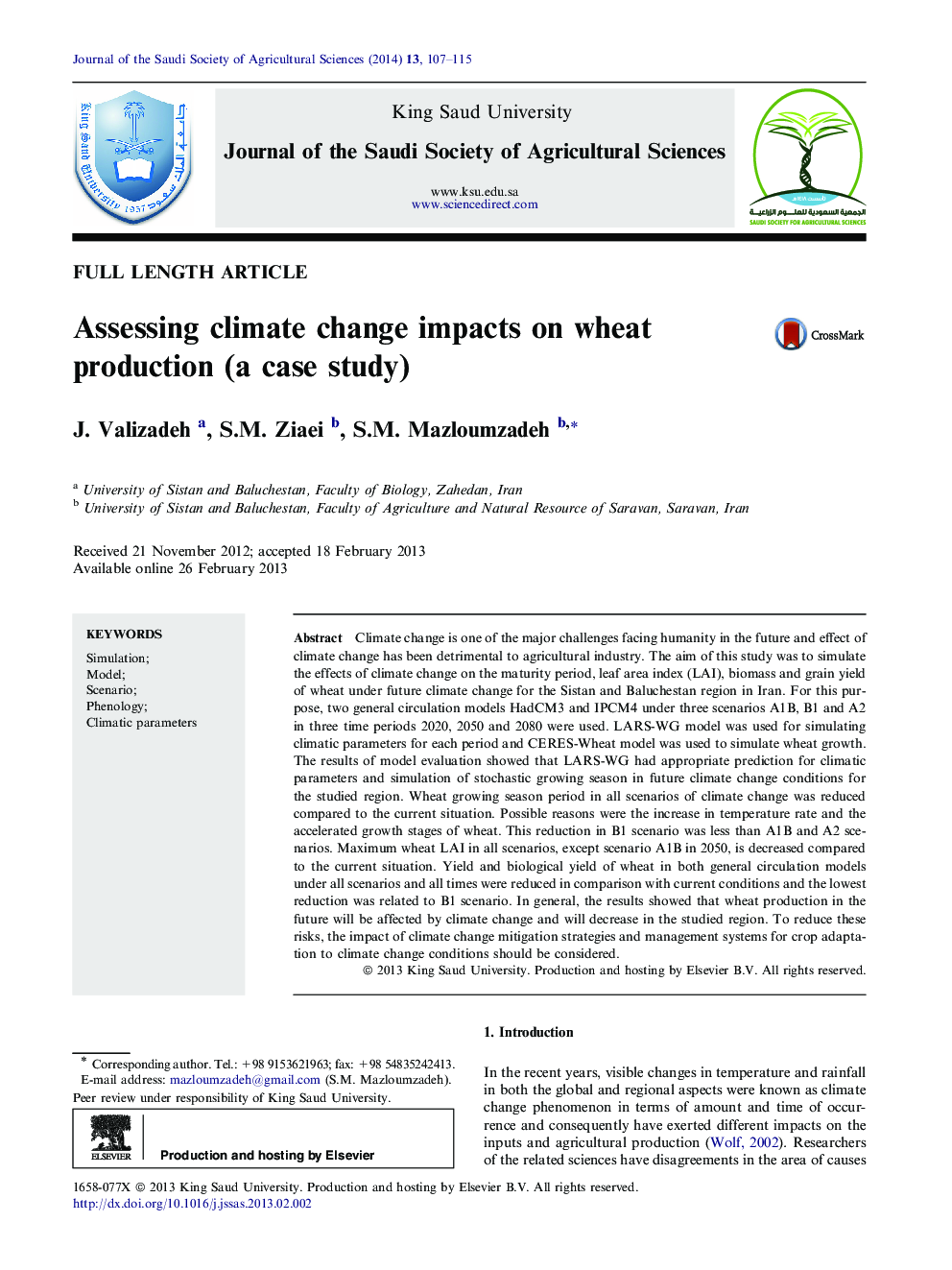| Article ID | Journal | Published Year | Pages | File Type |
|---|---|---|---|---|
| 4495608 | Journal of the Saudi Society of Agricultural Sciences | 2014 | 9 Pages |
Climate change is one of the major challenges facing humanity in the future and effect of climate change has been detrimental to agricultural industry. The aim of this study was to simulate the effects of climate change on the maturity period, leaf area index (LAI), biomass and grain yield of wheat under future climate change for the Sistan and Baluchestan region in Iran. For this purpose, two general circulation models HadCM3 and IPCM4 under three scenarios A1B, B1 and A2 in three time periods 2020, 2050 and 2080 were used. LARS-WG model was used for simulating climatic parameters for each period and CERES-Wheat model was used to simulate wheat growth. The results of model evaluation showed that LARS-WG had appropriate prediction for climatic parameters and simulation of stochastic growing season in future climate change conditions for the studied region. Wheat growing season period in all scenarios of climate change was reduced compared to the current situation. Possible reasons were the increase in temperature rate and the accelerated growth stages of wheat. This reduction in B1 scenario was less than A1B and A2 scenarios. Maximum wheat LAI in all scenarios, except scenario A1B in 2050, is decreased compared to the current situation. Yield and biological yield of wheat in both general circulation models under all scenarios and all times were reduced in comparison with current conditions and the lowest reduction was related to B1 scenario. In general, the results showed that wheat production in the future will be affected by climate change and will decrease in the studied region. To reduce these risks, the impact of climate change mitigation strategies and management systems for crop adaptation to climate change conditions should be considered.
